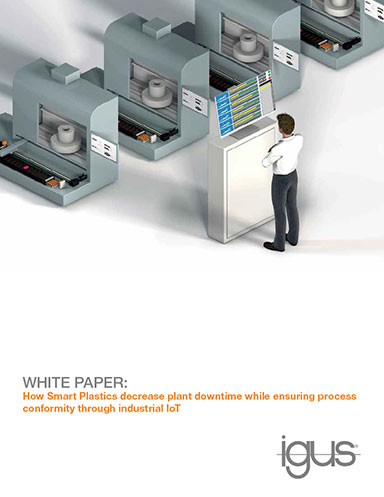Lockheed Tackles Test Data Complexity

The F-35 Lightning II Joint Strike Fighter is shown during a test flight. Images courtesy of Lockheed Martin.
Latest News
December 1, 2014
 The F-35 Lightning II Joint Strike Fighter is shown during a test flight. Images courtesy of Lockheed Martin.
The F-35 Lightning II Joint Strike Fighter is shown during a test flight. Images courtesy of Lockheed Martin.Managing design test data can be a complex and arduous process. Managing test data for a massive, multi-billion-dollar, multi-national aerospace project is an even more monumental task, but one that is manageable with the right tools.
Lockheed Martin’s F-35 Lightning II Joint Strike Fighter (JSF) program is tackling just such a massive data challenge as it performs full-scale testing on aircraft airframes to ensure they meet life design requirements. With specialized software tools, the company has been able to provide deliverables ahead of schedule—an important achievement, particularly in a program that is almost as well known for its delays as its technological innovation.
In fact, the F-35 static and durability testing program is bigger than any program in the history of Lockheed, and is being performed faster rate than historical programs thanks to the use of nCode Automation and Glyphworks software. The tools have helped Lockheed manage the complexity involved with accessing, sharing and acting upon test data to improve and modify designs.
“These large scale tests generate tremendous amounts of data that must be monitored and stored for assessment,” says Marguerite Christian, senior manager, F-35 SD Structures Test IPT at Lockheed. “In support of this testing, nCode Glyphworks is used in association with nCode Automation to store and process static and durability test data. These tests are a key element of the structural certification of the airframe design.”
According to Chris Gray, applications engineer at nCode, the tests at Lockheed generate too much data to be managed manually. “In typical, non-aerospace implementations, tests might generate 200 channels or parameters,” Gray says. “Lockheed is generating anywhere from 1,800 to 3,000 channels.”
The nCode software is used to analyze and manage data from static tests that apply worst case loading conditions, and durability tests that repeat the loading of thousands of load steps to replicate several lifetimes of the aircraft in service.
Since 2006, Lockheed has used nCode Automation to help engineers manage, search for, access and examine key F-35 test data. Engineers can download data sets on demand and report back results. Engineers are also able to share data with other project partners, and perform automated time, frequency, statistical and fatigue analyses.
The company uses Glyphworks, a test data analysis system for durability and fatigue analysis, to evaluate how behavior of the structures have changed over time, which could indicate cracks or other system issues.
Monitoring Thousands of Channels
Lockheed uses the nCode software to help manage data from two types of tests: static and durability. In the static tests, the aircraft are exposed to certain loads to simulate the types of loads experienced if a pilot would bank left, for example. The load is applied for a period of time while measurements are taken. In the durability tests, the load conditions change at a faster rate.
According to Christian, the static test articles utilized nCode Automation to store a combined 70GB of data for all three F-35 variants: F-35B (Short Take-Off and Vertical Landing), F-35A (Conventional Take-Off and Landing) and F-35C (Carrier Variant). Stress engineers in Texas, Georgia, California and the United Kingdom used HBM MD Client software to remotely monitor strain data in near real time throughout the test program.
“Using the processed data from MD Client the engineers monitored each test and when warranted, issued a pause or abort command to help safeguard the test,” Christian says. “Each static test simulated a different load case such as the air pressure and inertia loads encountered in flight during high-g pull-ups, negative-g push-overs, and roll maneuvers.”
A series of approximately 150 test conditions applied loads at different levels: 60% design limit load, 115% design limit load and 150% design limit load (ultimate load). Each full-scale static test article had more than 3,000 channels of data monitored and recorded. nCode Automation served as a data warehouse during the F-35 static testing and is the software product used for the F-35 durability tests currently in progress.
The durability test articles use nCode Automation and nCode Glyphworks to store and process data for all three F-35 variants. Each test article includes 1,800 to 2,000 channels of strain gage data. Depending on the type of spectrum applied, a series of nine to 15 Glyphworks flows are processed daily to translate raw data and collate lists of channels to assess against pre-defined criteria.
The Glyphworks flows capture maximum and minimum strain levels and compute average values, standard deviation and slope for load cases that repeat throughout the load spectrum.
“Any drift or step change in the strain data is flagged by Glyphworks, which compares the most recent data to historical data collected as the test is running,” Christian says. “Test data for lists of flagged channels are reviewed visually using Glyphworks to identify areas of concern that require further evaluation and inspection.”
The output and plots generated by Glyphworks flows are then compiled at the end of each test block and presented in reviews with engineering and customer personnel.
The software has allowed the company to perform the post processing of more than 4,000 channels of test data much faster than under legacy programs, the company says. The full airframe and HT component test for F-35A and F-35B variants were completed five months ahead of baseline schedules thanks to this faster processing capability. The schedule savings allowed incorporation of expanded capability tests without impacting flight clearance support.
The solution has also provided a common format for partner teams in other geographies to assist with mitigation and resolution of any test anomalies, which reduces down time and saves costs.
“It’s also completely repeatable,” Gray says. “There’s no human element in the statistical analysis.”
Lockheed is effectively managing the analysis of test data that would otherwise be impossible without an army of full-time engineers. In fact, it’s doing so with a degree of speed and accuracy that would be unattainable using manual analysis.
“The nCode software products have proven to be essential enablers to efficiently execute these critical large scale F-35 structural tests,” Christian says.
More Info
Subscribe to our FREE magazine, FREE email newsletters or both!
Latest News
About the Author
Brian Albright is the editorial director of Digital Engineering. Contact him at [email protected].
Follow DE





